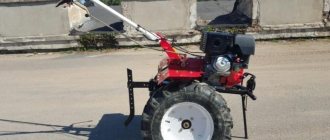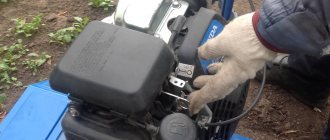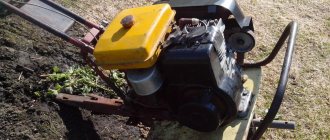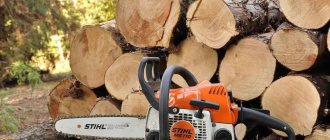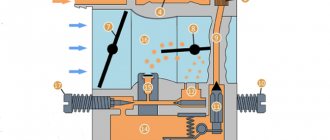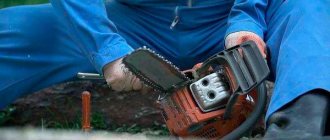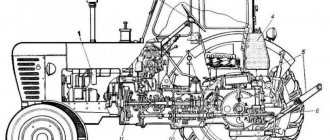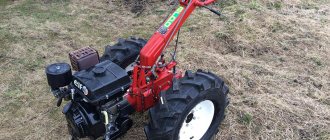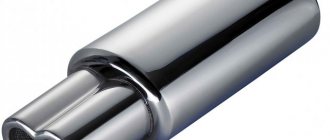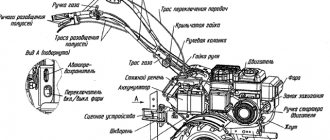When your hitherto trouble-free walk-behind tractor begins to act up, it is very annoying. It’s doubly annoying when this happens in a situation where there’s a lot of work and without a walk-behind tractor, it’s like without hands. It seems to start normally, but as soon as you give it a load, it immediately sneezes and stalls. What is the reason for such “betrayal”?
Why does the walk-behind tractor stall when the air damper is open?
The carburetor air damper, in other words “choke”, is necessary for normal engine starting and its further stable operation. If the damper is not adjusted correctly, for example, when it is not completely closed, the engine may not start at all.
One of the common reasons for the incorrect operation of the power unit is air leaks. The reason for this may be depressurization of the carburetor. Check the spark plugs, tighten them if necessary, tighten the connecting bolts. If this does not help, replace the gaskets.
The engine will stall even with the air damper open. You can adjust it until it moves normally, without shifting or snagging.
Engine won't start
- If the engine is tilted
, must be placed horizontally.
— Fuel may not be supplied to the carburetor
. The fuel system needs to be disassembled and purged with air.
— The filter may be clogged
. The filter needs to be replaced or cleaned.
— The outlet hole in the gas tank cap may be clogged
. Needs cleaning.
- Perhaps it's the candle
. You need to check the connection of the wires, the engine stop buttons, remove the spark plug and clean it. Replace if necessary.
— Possible magneto failure
. Replace.
Problems in the ignition system
If there is no spark, as already mentioned, you should carefully check the battery. When everything is fine with it, the contacts and the quality of the insulation are examined. In many cases, the lack of sparks is due to a clogged ignition system. If everything is clean there, look at the contact connecting the main electrode and the spark plug cap. And then they check the electrodes sequentially, assessing whether there is a gap between them.
A special feeler gauge will allow you to determine whether this gap corresponds to the recommended value (0.8 mm). Remove carbon deposits accumulated on the insulator and metal parts. Check the spark plug to ensure there are no oil stains. All of them must be removed. By pulling out the starter cable, dry the cylinder. If all these steps do not help, you will have to change the spark plugs.
Why does the walk-behind tractor start and stall?
If the equipment starts and immediately stalls, this may indicate the following problems:
- There may be a large distance between the electrodes, problems with contacts in the electronics, or the spark plug may be dirty. First, the candle is cleaned. Then the integrity of the wires is checked. The normal distance between the electrodes is set;
- The carburetor may become dirty, too little fuel is supplied. Sometimes it is necessary to change the fuel and reduce the amount of oil. The carburetor is dismantled, disassembled and thoroughly cleaned;
- If the unit does not pick up speed, this indicates a lack of fuel. Gasoline may simply spill. The defect must be eliminated or the fuel tank replaced;
- The walk-behind tractor does not develop speed when the gearbox breaks down. This is indicated by the presence of extraneous sound from the gearbox. The malfunction can be eliminated by replacing the oil that lubricates the components.
What does shooting into the carburetor entail?
Experienced car owners know that if the carburetor shoots when you sharply press the gas, this phenomenon always entails a large set of various unpleasant surprises:
- increased gasoline consumption;
- the running motor overheats greatly;
- the power unit does not develop full power;
- idle speed is unstable;
- the engine shoots into the carburetor, it is difficult to start.
If there is popping in the carburetor, the engine reacts inadequately to the pressed accelerator pedal. All the harmonious tuning of the engine and all its systems is lost. Such moments are accompanied by delays in movement and failures of the gas pedal. The car moves jerkily, jerking under loads, in transient conditions. The engine sneezes and stalls without developing full power.
| Symptom of malfunction | Probable Causes | Debugg |
| Reduced fuel pressure Fuel pressure drops after pressing the accelerator pedal (increasing engine speed) | Fuel leakage into the fuel return line due to a poor seating of the high pressure regulator valve or weakening of its spring | Replace the high pressure fuel pump |
| Reduced pressure created by the high pressure fuel pump | Replace the high pressure fuel pump | |
| Increased fuel pressure | High pressure regulator valve stuck | Replace the high pressure fuel pump |
| Clogged hose or fuel return tube to the fuel tank | Clean or replace fuel hose or tube |
Such behavior of the engine, popping sounds in the carburetor when pressing the gas sharply, indicate incorrect adjustments of the air-fuel mixture preparation and gas distribution systems. Therefore, it is necessary to carefully understand and re-adjust these two most important units.
Important nuances of servicing Cascade walk-behind tractors
If there are inappropriately sized gaps between the valves (pushers), then the ignition needs to be adjusted. If the gap is too small, it can cause the valve and motor to overheat. If the distance is too large, then the friction of the gas distribution system increases. This disrupts the process of filling the cylinders with the mixture necessary for operation. Sometimes, the condition of the spark plugs can become a problem with fuel entering the carburetor; they need to be checked and monitored regularly.
Of course, pay attention to the wheels. Monitor the condition of tires and supports, do not allow uneven load, try to ensure that each wheel has an equal load factor
Auto mechanic, specializes in agricultural equipment
If there is no spark, then the entire electronic ignition circuit of the Cascade walk-behind tractor should be checked. The walk-behind tractor itself is one of those equipment options that require ignition adjustment. Why there is no spark on the walk-behind tractor may depend on various factors. For this reason, you will need to configure the entire ignition system step by step.
Reason and solution
The easiest way to get rid of pops on a carburetor motorcycle is to simply move the needle valve to a different position, changing the degree of saturation of the mixture with gasoline. It is better to entrust this operation to a specialist, since not everyone can fine-tune the carburetor.
It happens that the motorcycle shoots into the muffler and carburetor - this is often found on domestic Urals and imported choppers with a large cylinder capacity. The problem is a clogged air-fuel mixture at the inlet. To eliminate it, it is worth changing the filters and sealing gaskets, and also checking how tightly the pipes fit to the inlet fittings and whether there are any large cracks in them.
The engine shoots the muffler.sadd 15 hp.
Very often, popping noises appear after replacing the muffler with a non-standard one or cutting holes in it to eliminate resistance to escaping exhaust gases. Particularly unpleasant sounds appear when installing a “direct flow”. The reason is the creation of a strong vacuum, which leads to a lean air-fuel mixture.
- Reconfigure the carburetor or reflash the control unit;
- Install filters with a different capacity;
- Disable the exhaust gas afterburning system.
On sports motorcycles whose engines run at high speeds, the problem with shots may be related to the speed limiter or crankshaft speed limiter. When a certain indicator is reached, the fuel supply may remain unchanged for some time, while the number of flares is reduced.
Accordingly, a huge amount of gasoline enters the muffler, which explodes with a jerky sound, forming a “machine gun burst.” It can be heard especially well when releasing the gas after active acceleration. It is impossible to eliminate such a problem without reducing the life of the engine - you have to change your driving style so as not to irritate yourself and others with unpleasant loud bangs.
It is worth paying attention to the ignition system - missed flashes may be due to its malfunction. Carefully inspect the high-voltage wires - there should be no cracks or peeling of the insulation on them. After unscrewing the spark plugs, check to see if there is a specific deposit on their surface that appears when using low-quality gasoline or when the ignition timing is set incorrectly.
If the motorcycle is equipped with an electronic ignition system, the problem can often be solved by reprogramming the control unit. Some motorcycle owners decide to make drastic changes by installing a new control unit with preset sport settings - this solves the problem of shots in the muffler, and also increases engine power and improves dynamic characteristics.
What malfunctions threaten walk-behind tractors?
A garden walk-behind tractor is a very useful thing in the household. With a good walk-behind tractor, work on personal plots goes much faster. But walk-behind tractors, like other household equipment, sometimes break down.
There are types of breakdowns and malfunctions that are specific to walk-behind tractors. Some faults can be repaired with your own hands, while with other, more complex ones, it is better to contact service centers so as not to aggravate the situation and damage the walk-behind tractor.
The most common malfunctions of garden walk-behind tractors:
- the walk-behind tractor stalls under load;
- The walk-behind tractor works intermittently;
- the walk-behind tractor smokes, stalls, the muffler makes unusual sounds;
- the walk-behind tractor does not start;
- The walk-behind tractor starts, but quickly stalls;
- The walk-behind tractor stalls when it heats up.
What breakdowns can cause engine failure?
There are other breakdowns that make it impossible to start the engine in winter. Among them, the following stand out:
- gasoline that was not drained from the tank for the summer;
- the throttle valve is in the wrong position;
- cheap motor oil is used;
- the carburetor does not work;
- problem with the ignition system.
Gasoline that remains in the fuel tank after several months of inactivity is no longer usable, so the snow blower will not work on it. The octane number drops, all the necessary additives evaporate. The problem can be solved very simply: you need to change the fuel, to do this, drain the old one and fill it with new one.
Each instruction for starting the equipment indicates in what position the throttle valve should be. If this condition is not met by the user, then it is also impossible to get the motor to work, since there is no required air flow. Even if the equipment starts, engine failure is not far off, since it begins to experience a load several times higher.
Poor quality oil is also the reason why the engine not only does not start, but can also fail. As a result, expensive repairs will be required in the future, since the main elements work with great frictional force, and without lubrication they simply wear out.
If none of the above is observed, then you should check the contacts. A break in the wiring or an incorrect gap at the coil leads to the absence of the necessary spark, and accordingly, ignition of the combustible mixture also does not occur.
We must not forget about the carburetor - one of the most important components in the design of a snow blower. He is responsible for supplying and preparing the combustible mixture. It is necessary to regularly clean the unit from carbon deposits and prevent dust from accumulating in it.
For information on how to properly start a snow blower, see below.
How to start a snow blower? For many, the question will seem strange, because there is nothing easier than following the instructions that come with the purchased equipment. Buyers do exactly the opposite. First they try to start the car, they break it, then they fix it. To avoid such incidents, let's figure out how to start a snow blower.
What to do if the walk-behind tractor engine does not start well when hot?
If the walk-behind tractor does not develop speed when hot, fault diagnosis is carried out in the following sequence:
- after several unsuccessful startup attempts, the spark plug is examined as described above. If possible, it is better to immediately replace it with a new one in order to completely eliminate questions on this point;
- check the compression and vacuum level in the gas tank;
- in a dark room, see if the wiring is sparking;
- make sure that when heated, a spark is definitely formed. In addition to the spark plug, a faulty ignition coil can also prevent sparking.
Other causes of malfunction include:
- lack or incorrect filling of oil, due to which the triggered oil level sensor blocks the operation of the engine part;
- failure of the valve in the fuel tank, which is supposed to maintain gasoline pressure. As a result, its liquid contents do not flow into the carburetor.
Repairing walk-behind tractors, and especially their power plant, is a responsible matter that requires literacy and good dexterity. This applies not only to domestic favorites - walk-behind tractors "Neva", "Cascade", "Agro", but also imported ones, for example, "Honda". But this does not mean that repairing them yourself is impossible.
Difficulty starting
Difficulties during startup indicate a malfunction of components and elements. The success of repair work depends on the accuracy of the diagnostics. If deficiencies are found, they repair the diesel walk-behind tractor. Service and minor repairs can be carried out on your own. You will need a set of keys, a locksmith mechanism and skillful hands.
At the fuel preparation stage, the following incidents are likely:
- a lightweight filter does not let air in;
- the hole in the tank lid is boarded up;
- the fuel supply channel is clogged;
- The carburetor broke down.
After a series of unsuccessful launches
If the candle is dry, it means that fuel is not entering the combustion chamber. Let us perform several operations one by one to restore the supply system:
- drain old gasoline;
- wash the tank;
- clean the special filter from dirt;
- clean the fuel supply hose;
- clean the carburetor jets;
- fill the tank with the cleanest fuel;
- open the tap;
- Clean the breathing channel in the tire.
Main malfunctions of walk-behind tractors
Diesel and gasoline engines have different motor resources. For the former, the normal figure is 4000 m/h, but the latter are capable of providing only 1500 m/h. Despite this, diesel models of walk-behind tractors are not in high demand. After all, both when purchased and during operation they are much more expensive. Therefore, most likely, you are working with a walk-behind tractor equipped with a gasoline (carburetor) engine.
All breakdowns that may occur during the operation of agricultural mini-equipment can be divided into two categories:
- Engine faults:
- startup problems;
- malfunctions.
- Malfunctions of other components and mechanisms:
- improper clutch operation;
- breakdowns in the gearbox;
- problems with the chassis;
- control and automation malfunctions;
- malfunctions of walk-behind tractor systems (cooling, lubrication, etc.).
Read also: How to check verticality with a level
In many ways, the success of repairing a suddenly broken machine depends on the correctness of the diagnosis. As for maintenance, it is carried out precisely in order to identify small faults that will later lead to serious ones.
Repair
It is not possible to repair a cultivator yourself in all cases. The following work is most often carried out:
- Setting up the ignition system.
- Solving problems with the power system.
- Replacement of external parts.
If problems arise with the internal components of an internal combustion engine, it will be difficult to replace them yourself, because To do this you need to have special skills and have the required tools.
Gas engine
Repair of gasoline cultivators includes:
- Replacing filters.
- Setting up the carburetor.
- Ignition settings.
Gasoline devices are less demanding to use.
Diesel engine
Repairs of diesel engines are carried out much more often. Features of the work carried out are as follows:
- Replacing the filter.
- Adjusting the fuel pump.
Units of this type require special care in winter.
Electric motor
Some walk-behind tractors are powered by an electric motor. This design is characterized by less complexity, however, if a malfunction occurs, it will be difficult to carry out repairs yourself.
If it is not possible to replace the electric motor, then its repair should only be carried out by professionals. Most often, the winding burns out and the position of the shaft is disrupted.
Starting device
The engine is started using a special device. In most cases, it is represented by spark plugs and a starter.
You can repair the starting device yourself. In some cases, the starter is replaced with a new one.
Transmission
Some walk-behind tractor models are equipped with gearboxes. In most cases, only forward and reverse speeds are available to choose from. Do-it-yourself repairs may include the following points:
- Adjusting the cable used to control the device.
- Replacing a broken box.
- Periodic replacement of lubricant.
The gearbox is a combination of shafts and gears. Solving some problems on your own is difficult.
Gearbox
You can repair the cultivator gearbox yourself. Such a unit is represented by a combination of various gears that mesh. The repair includes:
- Replacement of gears. To do this, the structure is disassembled, after which the shafts along with the gears are removed. You can purchase the required elements at a specialized store.
- Worm gear lubricant. Required to reduce wear and cooling.
Malfunctions of gasoline and diesel garden walk-behind tractors
A garden walk-behind tractor is a very useful thing in the household. With a good walk-behind tractor, work on personal plots goes much faster. But walk-behind tractors, like other household equipment, sometimes break down.
The most common malfunctions of garden walk-behind tractors:
- the walk-behind tractor stalls under load;
- The walk-behind tractor works intermittently;
- the walk-behind tractor smokes, stalls, the muffler makes unusual sounds;
- the walk-behind tractor does not start;
- The walk-behind tractor starts, but quickly stalls;
- The walk-behind tractor stalls when it heats up.
Malfunction: walk-behind tractor stalls under load
If the walk-behind tractor operates normally for a few minutes and then stalls, the cause is usually a failure in the fuel supply or problems in the ignition system.
To find out what is the cause of the malfunction of the walk-behind tractor, you must first check how the fuel is supplied:
- take out the spark plug and inspect it - if it is dry, it means there is not enough fuel;
- check whether there is enough fuel in the gas tank of the walk-behind tractor;
- make sure that the fuel tap is open - a closed tap can be a simple reason that the walk-behind tractor stalls.
If the problem is a malfunction of a gasoline walk-behind tractor in the ignition system, it must be re-adjusted as follows:
- remove the cover protecting the ignition system;
- turn the engine flywheel until the contacts in the magneto open;
- using a feeler gauge, measure the distance from the anvil to the hammer;
- turn the flywheel until the piston is compressed to maximum;
- turn the flywheel again until a knock appears, indicating the operation of the overrunning clutch;
- turn the flywheel in the other direction so that its mark coincides with the mark on the body of the walk-behind tractor;
- set the distance from the interrupting contact to the cam to 0.3 mm;
- fix the cam with the screw located above the element;
- install the cover into the walk-behind tractor body.
If the adjustment is made correctly, the walk-behind tractor will not stall during operation.
Malfunction: the walk-behind tractor operates jerkily, intermittently or at reduced power
If a walk-behind tractor with a gasoline or diesel engine begins to work intermittently, you must immediately turn off the unit and begin troubleshooting.
Continuing to work with a faulty walk-behind tractor means leading it to more serious breakdowns.
What to do:
- if the engine of a gasoline walk-behind tractor makes reverse movements, it is necessary to rinse the pump and hoses for supplying fuel and replace the fuel with a higher quality one;
- when the walk-behind tractor operates jerkily due to incomplete warming up of the engine, you need to turn off the engine, let it cool completely, start it and warm it up for ten minutes;
- if engine power has dropped, you need to check and clean the filter system;
- If the ignition magneto wears out, the part must be replaced with a new one.
Malfunction: the walk-behind tractor smokes and stalls, the muffler makes unusual sounds
Possible causes of the malfunction:
- too much motor oil in the fuel;
- the ignition is set incorrectly;
- The fuel in the engine cylinder does not burn completely.
Troubleshooting methods:
- if there is excess oil, drain the fuel, flush the fuel pump and hose system, and add new fuel;
- check that the gap between the electrodes is set correctly;
- if it becomes obvious that the fuel is not completely burned, disassemble the piston system, wash and dry the cylinder, and adjust the carburetor correctly.
Malfunction: the walk-behind tractor starts, but quickly stalls
This malfunction occurs if there are problems with the contacts. What to do:
- clean the candle;
- check the integrity of the wires;
- set the correct distance between the electrodes.
Malfunction: the walk-behind tractor stalls when heated
This problem occurs due to excess air entering the carburetor. In case of such a malfunction, the throttle trigger should be squeezed halfway. After starting the engine, you need to give it a good gas before starting work.
If you cannot cope with the malfunctions of the garden walk-behind tractor, the walk-behind tractor stalls, the walk-behind tractor does not start, contact the Alfa-Rost walk-behind tractor repair shop in Rostov-on-Don. We guarantee high-quality repairs of gasoline walk-behind tractors using original components, which are always available in our warehouse.
The carburetor prepares the fuel mixture for the engine.
The optimal fuel mixture is 1 liter of fuel per 15 liters of air. Depending on the operating conditions of the engine, rich, enriched, normal and lean mixtures are used. For example:
— to start a cold engine, a rich mixture is used, since part of the fuel condenses on the walls of the cylinder and the intake manifold, as a result, the working mixture in the cylinder will be optimal for ignition.
— at idle, to ensure stable and uniform operation of the engine, an enriched mixture is used.
— in partial load mode (throttle opening up to 80%), a lean mixture is used, this is done for better fuel efficiency, since in which case the power can be increased by fully opening the throttle.
— in maximum power mode (throttle valve fully open), the optimal fuel mixture is used.
Lean and optimal mixtures burn with virtually no smoke! The rich mixture burns with visible black smoke, the rich mixture smokes like this:
Obviously, when the mixture is enriched, the carburetor is faulty or the air filter is catastrophically clogged.
A little theory about the design of the carburetor:
A modern carburetor is a rather complex mechanical device that combines several systems:
Idle system - prepares a rich mixture at low vacuum behind the throttle valve. The operation of this system is ensured by 2 jets - air and fuel; in fact, the idle system is a separate, simple carburetor.
Transition system - ensures that the engine operates during the transition from idle to partial load mode, before the main metering system begins to operate.
The main dosing system ensures the preparation of the mixture in all engine operating modes, except idle and transition mode. The main dosing system also includes an accelerator pump.
Why does the walk-behind tractor stall under load?
Almost every owner of a walk-behind tractor, regardless of the brand and model of the agricultural machine, has encountered a problem in which the walk-behind tractor starts and stalls after 5 minutes of operation. The main reasons for this breakdown lie in problems with the fuel supply and breakdown of the car’s ignition system.
As practice shows, if a walk-behind tractor stalls during operation, its owner should immediately inspect the parts of the fuel supply system. First of all, unscrew and look at the spark plug - if it is completely dry, this indicates that fuel is not getting into the engine cylinder. After this, you need to make sure that there is a sufficient amount of fuel in the fuel tank. If there is gasoline and there is enough of it for work, inspect the fuel valve - it is quite possible that it is in the closed position. To start the walk-behind tractor, just open the fuel tap and continue working with the unit.
Another reason why the walk-behind tractor starts up and then stalls after 5 minutes of operation is a breakdown of the ignition system. It is quite simple to determine that the unit is faulty for this very reason - look at the spark plugs - if they are wet, it means that the fault has appeared in the ignition system of the walk-behind tractor. The best way out of this situation is to re-adjust the unit’s ignition system. All actions must be performed in this order:
- Remove the cover that protects the elements of the ignition system;
- Turn the motor flywheel until the contacts in the magneto open;
- Using a special feeler gauge, measure the gap between the “anvil” and the “hammer” of the walk-behind tractor’s ignition system;
- After this, turn the flywheel until the piston of the walk-behind tractor compresses. In this case, the latter must reach its highest point;
- Turn the flywheel again until you hear a characteristic knock - this means that the overrunning clutch has engaged;
- Then turn the flywheel in the opposite direction so that the mark on it coincides with the mark on the walk-behind tractor body;
- Set the gap between the interrupting contact and the cam - it should be 0.3 mm;
- At the end, fix the cam with a screw located on top of the part and install the protective cover back into the walk-behind tractor body.
Also, the utility unit often stalls when tilted. This indicates an insufficient amount of fuel in the fuel tank. If you put the unit in a horizontal position, pull out the starter cable, and the engine starts, it means that you will need to add gasoline to the tank.
Autoclub38 › blog › popping noise in the engine? we will tell you why the muffler shoots
Probably, many of you have once heard strange sounds similar to gunshots coming from the exhaust pipe of a car. Perhaps this will be a discovery for many, but it is not the muffler that fires, it is just a resonator, that is, in other words, a “column for the speaker.”
In this article we will talk about what pops in a muffler are, where they come from and what to do when the muffler shoots.
Why does it shoot at the silencer?
In carburetor internal combustion engines, the culprits of pops and shots are most often: the carburetor, timing belt or ignition system. “It shoots into the muffler” is not always strong, it can also be less noticeable pops. In addition, popping noises in the muffler can appear in completely different situations and engine operating modes, for example, during acceleration, at idle speed, or when releasing gas. Often, or it would be more correct to say most often, “shots” are accompanied by increased smoke emission from the exhaust.
In short, the reason for the pops and shots is an excess of fuel; the over-enriched fuel mixture burns out in the exhaust system. The volume and intensity of the popping noise depends on how rich the fuel mixture is. If the muffler shoots, then, as a rule, there are other troubles, such as: loss of power, floating idle speed, and, in addition, fuel consumption increases.
The search for causes should begin with checking the tightness of the exhaust system. A rusted muffler or resonator can cause air to leak, and you will eventually hear something similar to popping noises.
The second reason may be an increased fuel level in the float chamber of the carb.
https://www.youtube.com/watch?v=TJrYg23xNRw
The carburetor float chamber needle valve may be faulty.
Often the reason lies in a broken float seal or, more simply, in a broken float.
The channel or air jet of the idle system is clogged.
Malfunctions in the operation of the economizer can cause shots and pops from the exhaust.
Problems with the fuel pump.
Other reasons why the exhaust fires
If you hear popping sounds in the muffler at idle, as well as at high and medium speeds, the cylinder head may be the cause; poor thermal clearance adjustment can cause shots in the muffler. This unpleasant phenomenon is treated by adjusting the thermal gap.
Sometimes the muffler shoots immediately after the engine warms up, this usually indicates poorly adjusted valves. The camshaft cams and tappets also have a thermal gap at the contact points; as a result, after the engine warms up, the metal parts warm up and expand, as a result the gap between them becomes smaller.
Due to poor valve adjustment, or lack of thermal clearance, the valve plate does not fit tightly to the seat, and as a result, the valve does not close completely. As a result, the fuel-air mixture (FA) flows into the exhaust manifold through the gap at the moment of compression, where ignition actually occurs in the form of a small pop or shot. To eliminate this, you need to adjust the valves; read how to do this in this article.
Late ignition often causes shots in the muffler. Due to untimely supply of a spark, ignition of the fuel assembly does not occur or occurs, but with a delay. The piston is already moving down with unburnt fuel, and the exhaust valve automatically opens, through which the fuel mixture enters the hot exhaust manifold, where a “micro-explosion” occurs.
If you cannot find the reason why popping sounds occur in the muffler, seek help from specialists; do not leave everything as it is; popping noises and shots are signs of a malfunction in the engine. By delaying or “turning a blind eye,” you risk completely ruining your car’s engine.
And not only the engine, there is a high probability of damage to the exhaust system, even spontaneous combustion of the car. In addition, pops and shots in the muffler are accompanied by increased fuel consumption, and this, as you understand, leads to unnecessary expenses.
What malfunctions threaten walk-behind tractors?
A garden walk-behind tractor is a very useful thing in the household. With a good walk-behind tractor, work on personal plots goes much faster. But walk-behind tractors, like other household equipment, sometimes break down.
There are types of breakdowns and malfunctions that are specific to walk-behind tractors. Some faults can be repaired with your own hands, while with other, more complex ones, it is better to contact service centers so as not to aggravate the situation and damage the walk-behind tractor.
The most common malfunctions of garden walk-behind tractors:
- the walk-behind tractor stalls under load;
- The walk-behind tractor works intermittently;
- the walk-behind tractor smokes, stalls, the muffler makes unusual sounds;
- the walk-behind tractor does not start;
- The walk-behind tractor starts, but quickly stalls;
- The walk-behind tractor stalls when it heats up.
The starter screams, the cord comes out
- May scream if there is a lot of lube on the balls. It is necessary to clean the balls and the places in the ratchet where they are inserted.
The cultivator released several pops and began to “float”
- Most likely, the power system is not coping, or the fuel level in the tank is low, the float axis may be skewed and perhaps there is debris under the needle valve, you need to remove everything and check the air filter, jets.
The material will be updated, we will be waiting for questions, stories about the detection of a particular malfunction and ways to eliminate it. Also see Answers to questions about a particular walk-behind tractor model on its description page.
The walk-behind tractor is a useful household unit that greatly simplifies land and house work. Like any other equipment, units can break down. But it is quite possible to repair a walk-behind tractor engine yourself, following simple recommendations.
Difficulty starting
Difficulties during startup indicate a malfunction of components and elements. The success of repair work depends on the accuracy of the diagnostics. If deficiencies are found, they repair the diesel walk-behind tractor. Service and minor repairs can be carried out on your own. You will need a set of keys, a locksmith mechanism and skillful hands.
At the fuel preparation stage, the following incidents are likely:
- a lightweight filter does not let air in;
- the hole in the tank lid is boarded up;
- the fuel supply channel is clogged;
- The carburetor broke down.
After a series of unsuccessful starts, it is advisable to unscrew the spark plug. The working part can be filled with fuel. In this case, we dry the element, then pump the cylinder through the hole. We twist the candle and start it again.
If the candle is dry, it means that fuel is not entering the combustion chamber. Let us perform several operations one by one to restore the supply system:
- drain old gasoline;
- wash the tank;
- clean the special filter from dirt;
- clean the fuel supply hose;
- clean the carburetor jets;
- fill the tank with the cleanest fuel;
- open the tap;
- Clean the breathing channel in the tire.
Fuel supply problems
If during operation the walk-behind tractor stalls and does not start again, then most likely the problem is in the engine or in the starting system. The first thing to do in this situation is to carefully inspect the spark plugs. Dry spark plugs mean that fuel does not have access to the engine cylinders.
In such a situation, first of all, check the presence of gasoline in the tank. It is possible that due to your forgetfulness, the walk-behind tractor has used up all the gasoline, and it simply needs to be refueled for further work. If everything is fine with gasoline, check the fuel valve - it may be closed. There is nothing complicated in this situation either - just open the tap and the engine will come to life again. It also often happens that during operation the walk-behind tractor stalls due to a strong roll. You need to place it horizontally. If the engine starts in this position, it means that there is little gasoline in the gas tank and when tilted it simply does not come out of the gas tank; you need to refuel.
The next thing that often happens is that the drain hole in the gas tank plug becomes clogged. You need to clean it, and the problem will be solved. It often happens that some kind of rubbish has gotten into the fuel system, especially considering the quality of gasoline today. In this case, you need to remove the fuel tap, drain the gasoline from the tank and rinse everything thoroughly, and then disconnect the connecting hose from the carburetor and thoroughly blow it out.
Design Features
The design of all snow blowers, regardless of the engine and type of movement, is similar. In addition to the engine, which can be electric or gasoline, there is a bucket. This is a device within which the auger shaft is fixed (if the machine is equipped with an auger). How wide the bucket is determines how much area the snow blower can cover in one pass. An auger is a metal shaft plus screws attached to it. They are attached in the direction of the center of the shaft, as they must rake snow.
The outlet pipe looks like a pipe; it throws snow mass at a distance of three meters. The pipe can be made of metal or plastic. As for the chassis, the snow blower can be on wheels or on tracks. An important part of the snow blower is the rotor, located inside, which crushes the snow and directs it to be discharged towards the outlet pipe.
Why won't the walk-behind tractor start?
Repair of a walk-behind tractor will be successful if you correctly diagnose the walk-behind tractor.
The reasons for unit failure are very different:
- The hole in the gas tank is clogged;
- The fuel supply channels are clogged with debris;
- The air filter blocks the entry of clogged air;
- Carburetor failure.
Gasoline and diesel walk-behind tractors must be carefully prepared for seasonal work.
It is important to make sure that all structural elements are in place and securely fastened
Installed Subaru engines or engines of other brands may not start after a long period of inactivity, especially in winter. Incorrect storage conditions for equipment also have a negative impact.
The following malfunctions may occur:
- The contacts in the electrical wiring have oxidized;
- Water has entered the oil or fuel;
- The integrity of the wire insulation has been compromised;
- Debris has accumulated in the carburetor jets.
Before starting the walk-behind tractor, you need to look at all the connections in the units of the device, check the integrity and connections of the throttle, reverse and clutch cables. If clamps or kinked cables are found, this must be corrected in order to start the unit.
It is necessary to check the amount of oil in the crankcase. Lack of lubrication can negatively affect the piston group. A diesel or gasoline walk-behind tractor may not start if there is not enough oil. Some models have low-level protection installed; if it is not there, you need to constantly monitor the volume of lubricating fluid.
It is important to take into account the quality of the gasoline being poured. The walk-behind tractor must be refilled with the brand recommended by the manufacturer, then the unit will work without interruption
Two-stroke engines operate on separately prepared fuel: gasoline and oil. It is important to maintain a strict ratio of substances.
Engine power has dropped
It often happens that a previously maintained walk-behind tractor, which has served for several years, suddenly loses its power.
— If the power has dropped after long-term storage
, perhaps the walk-behind tractor was stored with a wet carburetor and fuel system, which led to sediment accumulation. You can start the engine and let it run, often after this action the power is restored. If you have the skills, you can disassemble and clean it; if you don’t have the skills, it’s better to contact the service.
— The carburetor is probably clogged
. clean
— The gas hose gets clogged
. Need to blow.
— Possible loss of performance of the crankcase cuff
. Remove the gearbox housing and cover and inspect the cuff.
— Carbon deposits on the cylinder, muffler
. Clean.
— The air filter is clogged
. Clean.
Related Posts
- Without compression
. Change piston rings, cylinder, piston.
Diesel or gasoline engines
A motor cultivator is a universal equipment for working on a personal plot. It helps to cultivate the soil between the beds, between the trees. With its help you can easily get rid of weeds. The walk-behind tractor is much more functional equipment due to the fact that any attachments can be attached to it. This is essentially a mini-tractor, potato digger, plow, and cultivator at the same time.
The walk-behind tractor can have a diesel or gasoline engine. The startup in this case will be different, therefore, the cause of the breakdown may be different. Most often, the unit does not start after winter. Staying in a cold and damp room for a long time leads to such unpleasant moments as:
- clogged jets in the carburetor;
- damage to the insulation in the wires;
- oxidation of contacts;
- oil watering.
Before starting the walk-behind tractor for the first time, you must carefully check all the parts. Thus, there should be no clamping of the harness threads, and the lack of oil in the crankcase will lead to damage to the piston system.
The engine may not start due to old oil. This produces white exhaust smoke. In this case, a complete oil change is necessary.
There are units on sale that have protection against insufficient oil level, when it immediately begins to stall. Monitor the oil level carefully.
Also, the service life of a walk-behind tractor depends on the quality of gasoline. You should not refuel your unit with cheap gasoline, which can cause serious damage.
A diesel walk-behind tractor can also present unpleasant surprises immediately after purchase. It may not start due to air that has entered the fuel supply system. To fix it, you need a diesel supply valve, unscrew all connections along the fuel channels. The last step is to purge the nozzle.
Connecting high voltage wires
When the carburetor shoots when you sharply press the gas, you need to carefully check the high-voltage wires of the ignition system. The incorrect order of connecting the wires to the spark plugs leads to the fact that the moment of spark formation does not occur at the end of the compression stroke, as it should be. At the same time, the order of spark distribution to the cylinders during engine operation is disrupted.
Armored wire connection diagram for a standard 4 cylinder carburetor engine
Popping noises in the carburetor when you press the gas sharply indicate that sparking does not occur as each piston approaches the Top Dead Center (TDC), but chaotically. At the same time, the engine starts, although with difficulty, but during its operation the carburetor fires, repeating these pops with a certain frequency.
Troubleshooting involves correctly connecting the high-voltage cables to the spark plugs. When connecting, you should take into account the special markings on the distributor cover. These labels help make connections in the correct order.
Incorrectly set early ignition also causes the mixture to shoot into the carburetor. The spark on the spark plug occurs too early. Ignition of the air-fuel mixture does not occur at the end of the compression stroke, at TDC, but in the middle of the compression cycle or during the movement of the piston to TDC. The mixture of fuel and air does not ignite in a timely manner.
MB-1 walk-behind tractor: operating instructions and do-it-yourself fault repair
Special equipment, such as a walk-behind tractor, is very useful in farming. Due to the fact that walk-behind tractors are maximally balanced in terms of price, cost and performance ratio, they benefit greatly from both tractors and other special equipment.
With its help, you can perform a large number of different operations that take a lot of time and require a lot of effort, using manpower and simple equipment. All areas where a walk-behind tractor can be used no longer evoke disgust and reluctance to work.
In fact, all the work comes down to management - you just need to be present as a driver.
This applies to both modern technology and older models of walk-behind tractors, because over the decades their design, in general, has changed little - weight has decreased, the variety of models has increased, and more advanced materials are used for manufacturing.
But the frame, engine placement and control method remained the same, the attachments, in fact, remained unchanged, the difference can only be external, in insignificant details.
Therefore, the good old walk-behind tractors, whose service life has already exceeded thirty years, are still in service, and do their job year after year. But every year they increasingly need repairs and replacement of parts and components.
After all, any equipment wears out and needs repairs.
And you should pay great attention to this if, for example, you make long trips with a loaded trailer. A seized hub won't be a big problem, but a malfunctioning part of a more complex part like the transmission will be annoying, to say the least.
Therefore, you should familiarize yourself with all the “symptoms” of breakdowns in order to diagnose and prevent a malfunction in time.
Other works
Sometimes on Cascade walk-behind tractors the reverse belts need to be replaced. Usually they resort to it if it is impossible to adjust the tension due to severe wear or complete rupture
Important: only those belts that are adapted for a specific model are suitable for replacement. If you supply the wrong components, they will quickly become worn out.
Before replacing, turn off the engine and place it in zero gear.
Remove the insulating casing. Worn belts are removed, and if they are stretched to the limit, they are cut off. After removing the outer pulley, pull the belt onto the remaining pulley inside. Return the part to its place. Carefully check that the belt is not twisted. Put the casing back.
Very often it is necessary to disassemble the trigger mechanism in order to get rid of its malfunctions. Problematic springs do not need to be replaced. Sometimes they simply anneal the tip of the part with torches. Then the desired contour is reproduced with a file. Then the attachment of the spring and drum assembly returns to normal. It is wound onto the drum, the free edge is placed in the slot on the fan housing and the starter drum is centered.
Bend the “antennae”, cock the drum counterclockwise, and release the fully cocked spring. Align the holes of the fan and drum. Insert the starting cord with the handle, tie a knot on the drum; The tension of the released drum is held with the handle. The starting cord is changed in the same way
Important: all this work is easier to do together
If the gear shift knob is broken, remove the rotating head from it, knocking out the pin with a hammer. After unscrewing the screw, remove the bushing and fixing spring. Then remove the remaining parts that interfere with the repair. Only problematic parts of the gearbox are replaced without disassembling the entire device. Do the same when you need to remove the ratchet.
If the shaft has fallen out, then only devices with the appropriate length, diameter, number of teeth and sprockets are purchased for replacement. When the speed controller sticks (or, conversely, is unstable), you need to turn the screw that sets the amount of mixture. As a result, the drop in speed will no longer be sharp, forcing the governor to open the throttle. To reduce the risk of breakdowns, you need to take care of proper maintenance of the walk-behind tractor. Maintenance (MOT) must be carried out every 3 months.
To learn how to repair the decompressor of the Cascade walk-behind tractor, see the following video.
Comments
Sozinov Anatoly
hmm. This is the first time I’ve seen bushings spill out like that. and everything is correct. On my own behalf, I would like to add that the washers between the casing and the sprockets need to be changed sometimes, and to ensure that the sprocket shaft is properly tightened, and I drained the oil from the engine and poured it into the gearbox. anyway it will either eject through the plug or leak out through the seals
Alexey, thanks for the advice, I put two washers on both sides under the covers with seals, everything is ok, there is no leakage, everything works.
green gray
Nothing lasts forever, a walk-behind tractor must PLOW under any load, on kalym, earn money for spare parts, pay for itself several times over.
Alexey Efanov
I agree, the unit did just that, PLOWED, earned money and paid off a long time ago, but now you understand that it was possible to do without unnecessary overloads. Why, for example, was it necessary to carry 700 kg of cargo on a trailer and break the chain, when you could make two trips and not break gearbox, sometimes we ourselves look for adventures on our own backsides and sometimes we find them. I advise people that they need to be more careful, but I myself can’t change lanes, even though I know that I need to be more careful, but I do it as always, it’s probably already in the blood.
Alexey Efanov
This gearbox apparently has a ball gearbox, but the new gearboxes have needle gearboxes. I didn’t have to disassemble the new gearbox, so I can’t say anything about the needle gearbox. Try looking for an answer on the Internet.
Like any equipment, the walk-behind tractor requires timely maintenance and repair. And it is advisable to entrust their implementation to specialists who have the necessary tools and equipment and know their job well. However, if you are also familiar with the structure of internal combustion engines and understand the topic of mechanical engineering, then you can do a lot of what may be required to restore the machine’s performance on your own.
Incorrect thermal clearance
The main reasons for the difference in thermal gap from the norm are:
- Engine repair. When setting, a special or accidental reduction in the distance between the camshaft cam and the pusher is possible. Before the repair, as a rule, the car started without popping;
- Maintenance is not carried out on time. After a certain mileage, shrinkage, abrasion and deformation of surfaces occur. If the car owner does not adjust the thermal gap in time, the engine will start shooting at the carburetor.
In the first case, popping noises in the carburetor appear during a test run of the engine after repair. In the second case, the malfunction comes gradually. Initially, for example, when you press the gas pedal, short popping sounds appear, which become longer each time.
To diagnose the malfunction, you should check the gap, as shown in the photo below.
Checking the gap using a feeler gauge
If driving with an incorrectly adjusted thermal gap was not long, then there will be no consequences. In case of prolonged use, the edges of the valve plates burn and it will not be possible to get rid of it without repair. Fire will break into the manifold even if the damaged valve is adjusted correctly.
Shooting fire into the carburetor is not an independent failure, but a consequence of other malfunctions. Diagnostics of the timing belt, ignition and fuel system will help to find out why this happened. To prevent breakdowns, you should undergo maintenance on time and be careful when repairing your car.
If you have any questions, leave them in the comments below the article. We or our visitors will be happy to answer them
Preparing the walk-behind tractor for start-up
In the instructions, manufacturers always indicate how to start the walk-behind tractor correctly. However, not everyone wants to waste time reading long pieces of paper and start work without familiarizing themselves with the operating rules. This is fraught with serious damage. It will not be possible to return equipment that was used for other purposes or broken due to the fault of the owner under warranty. If you never manage to start the engine even after several attempts, the reason may not be a bad part.
To make sure that the walk-behind tractor engine or starting system is faulty, you must try to turn it on, following the instructions exactly. If the reason turns out to be incorrect actions, there will be no need to contact for repairs. Sometimes it happens that the MB does not start and immediately stalls due to a manufacturing defect. In this case, you can safely go to the warranty center to process a return.
When communicating with an employee, it is important to inform that everything was done according to the instructions and a breakdown could not have occurred due to the owner’s fault.
To start the walk-behind tractor:
- Check the oil level, even if it was filled just a day ago. Sometimes sellers convince you that the required amount of liquid has already been poured into the tank. You can’t trust words, because... An attempt to start a walk-behind tractor without oil will lead to breakdown and will not be accepted under warranty.
- Fill with fuel. The method for opening the tank varies depending on the model, so you need to read the instructions. For some types of engines, gasoline must be mixed with oil. The proportions are also indicated in the technical book.
- Open the petrol tap. Before doing this, you must move the pump lever to the “Start” position. The name varies depending on the manufacturer.
- Pump fuel from the tank using the starter and turn on the ignition. Then you need to pull the starter and move the choke lever to the “Operation” mode. If everything is done correctly, the walk-behind tractor will start.
The described scheme of action is relevant for a gasoline engine without an electric starter, for example the Lifan model. To start a diesel walk-behind tractor, you will have to spend more time. The main problem of such equipment is its instability to frost. When the outside temperature drops, the fuel freezes, so the MB has to be warmed up before starting. The first attempt to turn on may fail if you do not bleed the system with the starter, because Everything inside is airy. Then pump the decompressor several times. Some models indicate the exact time of such preparation. Usually it is enough to do this 5-6 times, and then pull it to the starting position. If all the steps are completed correctly, to start the walk-behind tractor, just press the decompressor and turn on the starter.
How to start a snow blower - procedure for equipment with electric and manual starter
https://www.youtube.com/watch?v=MlefV0aAbGs
Most breakdowns of snow removal equipment are associated with its improper use. Snow blowers especially often fail as a result of improper starting. A number of important mechanisms responsible for the smooth start-up of the engine and other machine components suffer from this.
To prevent premature breakdown of equipment, you need to turn it on correctly. If the snow blower is equipped only with an electric starter, then it must be started in the following order:
- First, you will need to move the snow blower fuel valve lever to the “On” or “On” position;
- Then you need to firmly fix the cap from the high-voltage wire on the top of the spark plug;
- After this, you will need to move the throttle lever to the “Closed” or “Choke” position. To do this, you need to move it all the way to the right;
- Next, you will need to move the starting switch lever to the “On” or “Enabled” position. After this, you need to press the pump several times to manually pump up the fuel;
- Then you need to press the starter button located on the snow blower body and hold it until the engine starts. It is not recommended to hold your finger on the button for more than 10 seconds. If the engine does not start, it is better to wait a few minutes and press the starter button again;
- Once the snow blower engine starts, you will need to move the throttle lever to the “Run” or “Open” position. After this, you need to give the engine some time to warm up. After 5–7 minutes you can start removing snow.
To start a snow blower with a manual starter, you should follow this algorithm:
- First of all, you need to check the amount of engine oil. Then you need to move the auger and wheel locking levers to the fully lowered position;
- Then you will need to move the fuel supply lever to the “On” or “Enabled” position;
- Next, you need to firmly secure the cap of the high-voltage wire to the spark plug;
- After this, the throttle lever must be moved to the “Closed” or Choke position;
- The start switch will need to be moved to the “On” or “On” position;
- Then you need to press the manual fuel pump button 3-5 times and slowly pull the starter cable towards you until resistance is felt. After this, you need to pull out the cable with a sharp jerk so that the snow blower engine starts;
- After this, you will need to move the throttle lever to the “On” or “Open” position and give the engine time to warm up.
All steps to start the snow blower motor must be performed exactly in the order specified in the algorithm. This will prevent increased load on the engine and other working components of the machine.
Starting system malfunctions
If during inspection the spark plugs turn out to be wet, but the engine does not start, then detecting the malfunction will be much more difficult:
- the ignition system may fail;
- due to depressurization of connections, air leaks may occur;
- the air damper in the carburetor may not be closed enough;
- carburetor failure.
A failure of the ignition system is an unpleasant moment, but you should not panic and immediately call a specialist. First, remove and inspect the spark plug. If you find carbon deposits on it, clean it with sandpaper, rinse it with gasoline and let it dry completely. Very often, after such a procedure, the engine begins to work normally.
If the engine still won't start and you feel competent, check the gap between the electrodes. The required value is indicated in the manufacturer's instructions, but due to constant vibration during operation, it may change, and the walk-behind tractor may stall while driving. Adjust the gap to the desired value by bending the side electrode.
It will not be possible to deal with other problems of the ignition system right away. If the insulators of spark plugs or electrical wiring are burnt out, they need to be replaced. You can also short the “STOP” button to ground, and until the short circuit is eliminated, the engine will not start. Also, the reason that the engine does not start may be a violation of the contacts in the spark plug brackets or a violation of the gap between the magnetic shoe and the starter. Finally, the starter itself may be damaged and will need to be replaced.
If the walk-behind tractor does not gain power normally, it is worth checking its muffler. Over time, fuel combustion products clog the muffler, forming a thick layer of soot on its walls, so it needs to be cleaned periodically. To do this, the muffler must be removed, plugging the outlet hole with a clean rag, washed first in gasoline, then cleaned of carbon deposits by washing with detergents, and finally dried with a hairdryer.
Sometimes the walk-behind tractor stalls during operation due to simple overheating. If, with the throttle fully open, you press the throttle, and the engine, instead of accelerating, loses speed, then this is a clear sign of overheating. The walk-behind tractor must be stopped and allowed to cool completely, and then started again.
This is not the entire list of reasons why your recently perfectly serviceable walk-behind tractor may stall even under light load. Almost all components of the walk-behind tractor are subject to significant loads during operation, so minor malfunctions and breakdowns are not uncommon. Therefore, if you discover that there is something wrong with the walk-behind tractor: extraneous noise, twitching, strong vibration, etc. - Turn off the engine immediately. And only after the engine has cooled down can you begin troubleshooting. But this is a topic for another conversation.
Carburetor not tuned
Often the reason that the engine shoots into the muffler is an incorrectly configured carburetor. Its task is to create a fuel-air mixture, which is then supplied to the engine. If it is configured in such a way that the mixture is oversaturated with gasoline, a situation similar to that described above is created. The solution here is to check and adjust the “carb”.
The first step is to check the fuel level in the chamber where the float is located. Each carburetor is individually adjusted and has its own level. However, if its cover is removed, the float should be flush with the level of the cover. If this is not the case, adjust the level.
Black smoke, pops. Chinese engine malfunctions
The reason that the carburetor shoots into the muffler may also be the jets. They are either configured incorrectly or become clogged over time. If the air jet does not supply enough air, the mixture becomes oversaturated with gasoline with the result described above.
| Air/fuel ratio | Description | |
| 6/1 — 7/1 | Extremely rich mixture. Ignition failure. | Rich mixture. Long burning, low temperature. |
| 7/1 — 12/1 | Overrich mixture. | |
| 12/1 — 13/1 | Rich mixture. Maximum power. | |
| 13/1 — 14,7/1 | Slightly enriched mixture. | Normal mixture. |
| 14,7/1 | Chemically ideal ratio. | |
| 14,7/1 — 16/1 | Slightly lean mixture. | |
| 16/1 — 18/1 | Poor mixture. Maximum efficiency. | Poor mixture. Fast combustion, high temperature. |
| 18/1 — 20/1 | Over-lean mixture. | |
| 20/1 — 22/1 | Extremely lean mixture. Ignition failure. |
